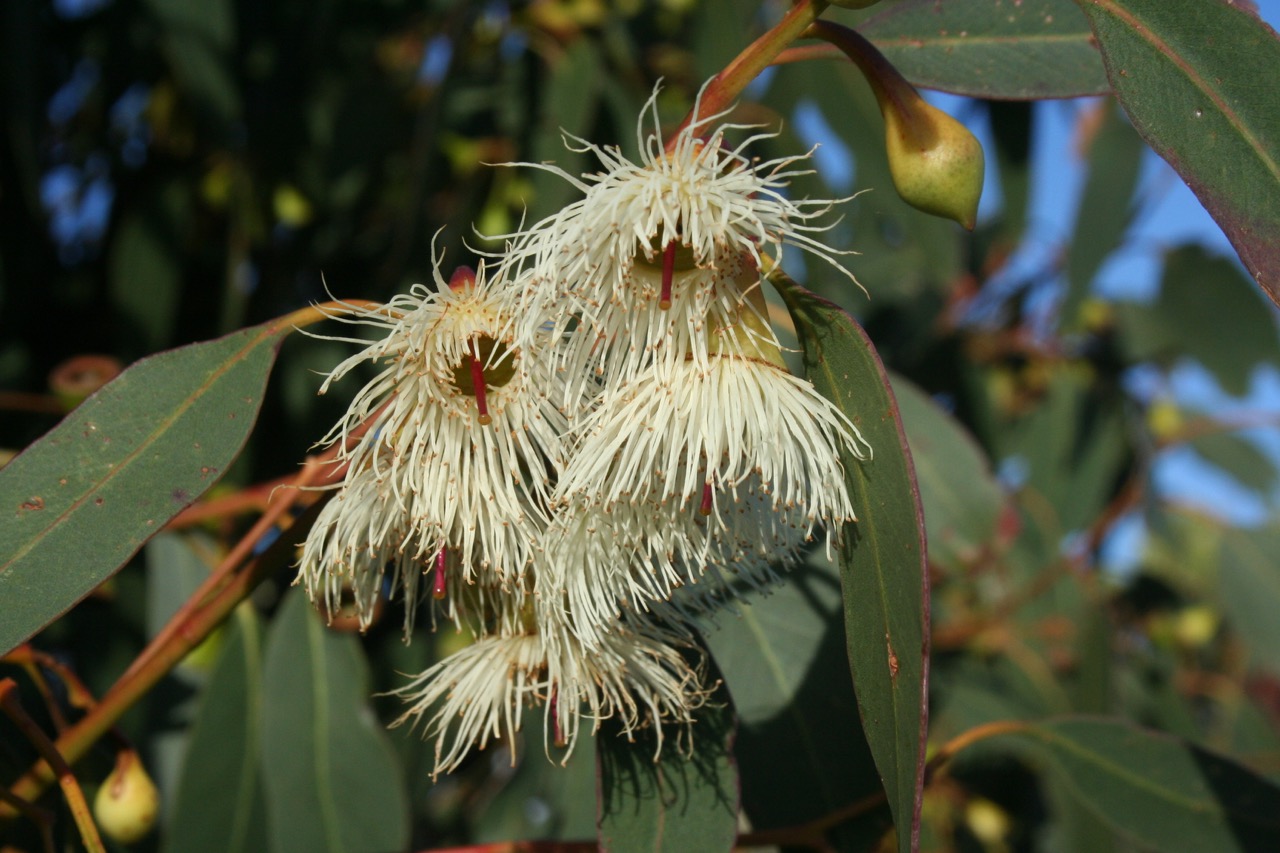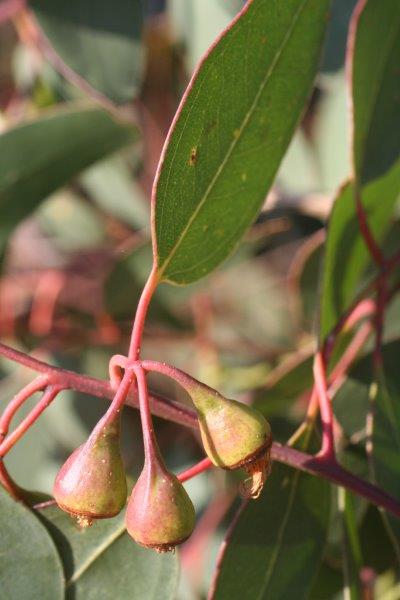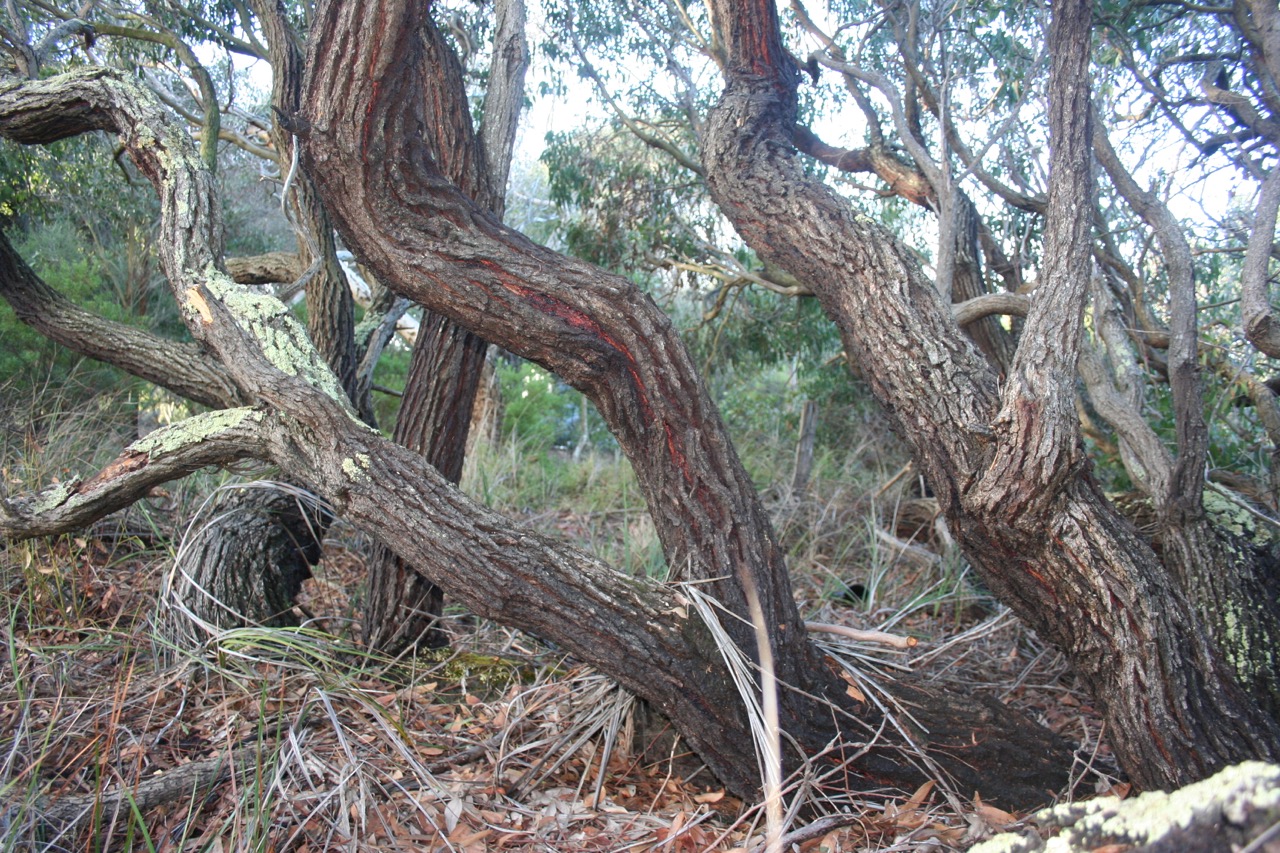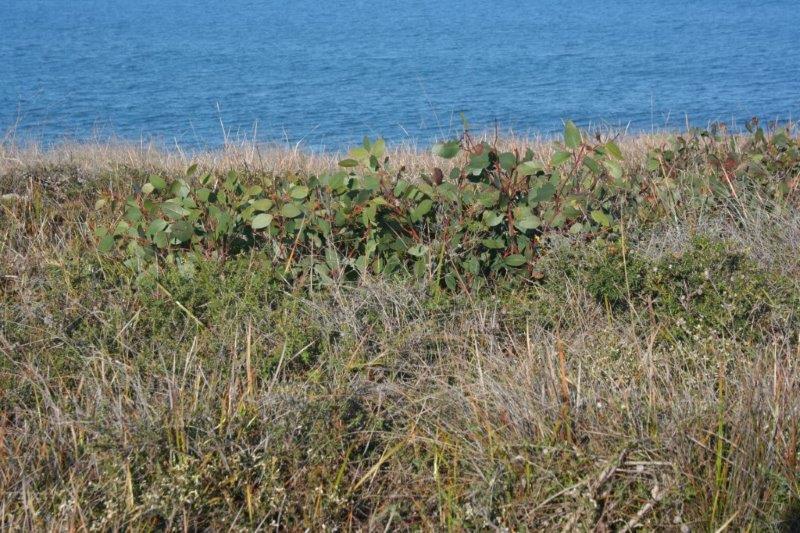



This is an iconic tree species along our coastline with the Ironbark Basin named in its recognition as the dominant botanical feature. Along the coast it makes its presence felt just to the north of the Bells Beach Recreational Surfing Reserve where a small stand is located close to Coastal Heathland. In these situations its proximity to the ocean and nutrient poor soils means it grows almost as a stunted shrub less than 3m high. Some trees at Southside are like this whereas in places like Bells Boulevard or Distillery Creek near Aireys Inlet trees are typically in excess of 30m in height.
Deeply furrowed dark greyish brown bark gives it a distinctive appearance made even more so following fire when the colour becomes almost black.
Juvenile leaves are bluish to grey-green and broadly lanceolate. As the plant matures the newer leaves are longer and narrowly lanceolate.
As the species name hints, the flowers are produced in threes which are formed on long stalks. The flower buds are large and conical in shape. In autumn/winter showy, creamy white to pinkish flowers emerge forming an important food source for many nectar feeding native birds. Barrel-shaped gum nuts (fruits) follow which are also sought out, this time by seed-eating birds like Crimson Rosellas and Gang Gangs.
Indigenous uses as provided by the Wathaurung Aboriginal Corporation: The wood of this plant is used for making spears. The tree was not cut down to make the spear. But rather a slab was split of the trunk and then fashioned into spears.
Both sides of the leaf are one colour